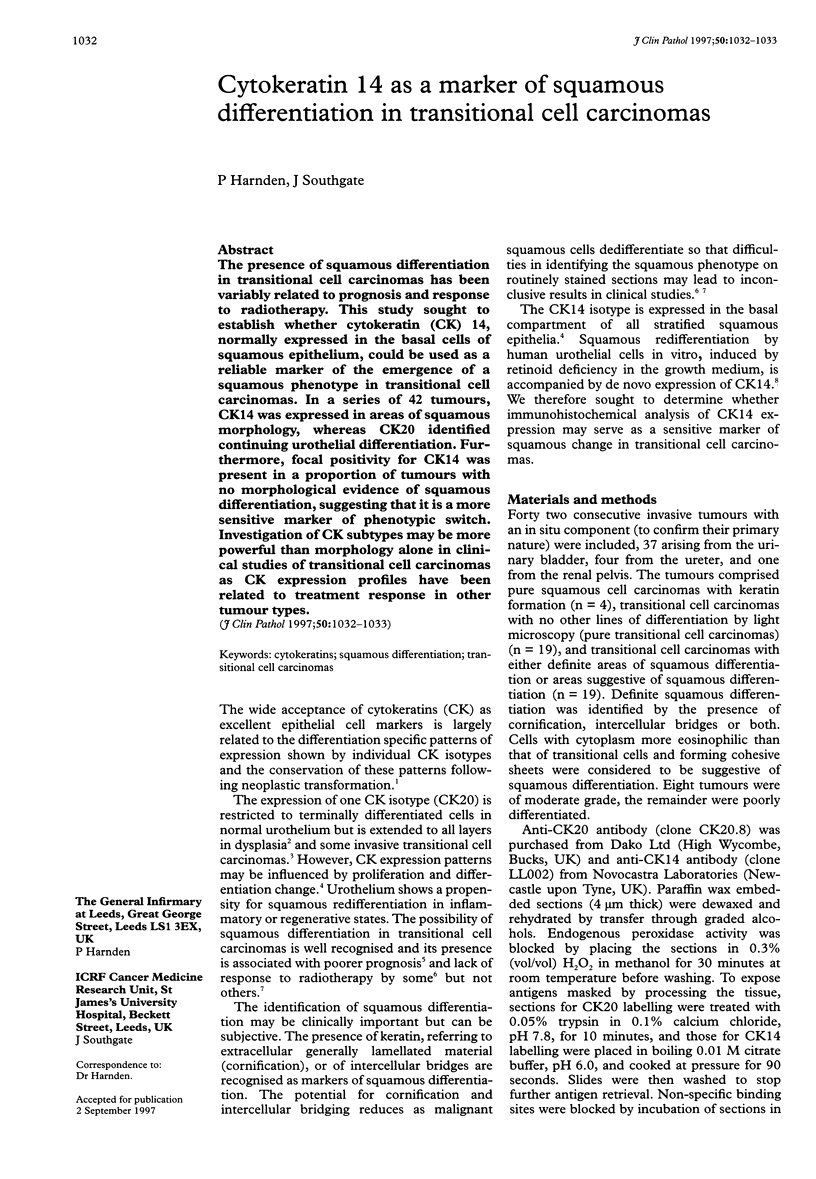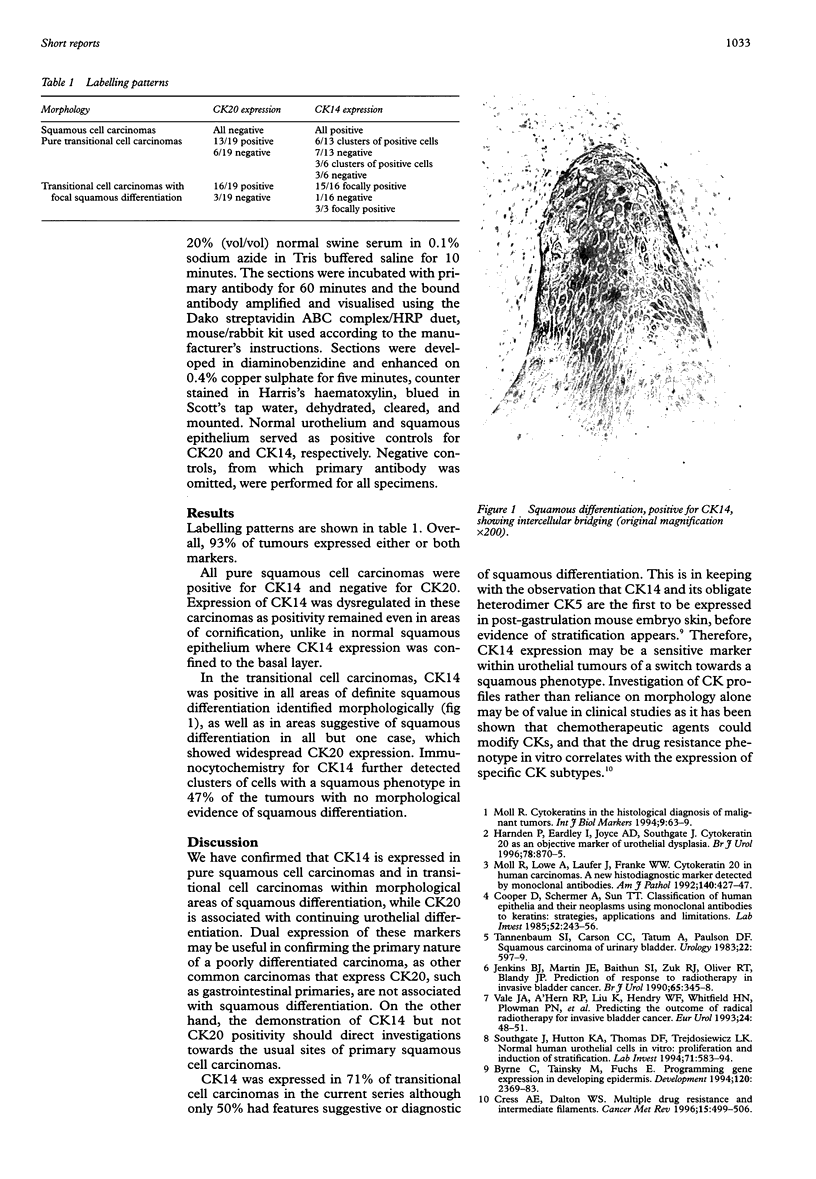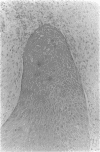Abstract
The presence of squamous differentiation in transitional cell carcinomas has been variably related to prognosis and response to radiotherapy. This study sought to establish whether cytokeratin (CK) 14, normally expressed in the basal cells of squamous epithelium, could be used as a reliable marker of the emergence of a squamous phenotype in transitional cell carcinomas. In a series of 42 tumours, CK14 was expressed in areas of squamous morphology, whereas CK20 identified continuing urothelial differentiation. Furthermore, focal positivity for CK14 was present in a proportion of tumours with no morphological evidence of squamous differentiation, suggesting that it is a more sensitive marker of phenotypic switch. Investigation of CK subtypes may be more powerful than morphology alone in clinical studies of transitional cell carcinomas as CK expression profiles have been related to treatment response in other tumour types.
Full text
PDF

Images in this article
Selected References
These references are in PubMed. This may not be the complete list of references from this article.
- Byrne C., Tainsky M., Fuchs E. Programming gene expression in developing epidermis. Development. 1994 Sep;120(9):2369–2383. doi: 10.1242/dev.120.9.2369. [DOI] [PubMed] [Google Scholar]
- Cooper D., Schermer A., Sun T. T. Classification of human epithelia and their neoplasms using monoclonal antibodies to keratins: strategies, applications, and limitations. Lab Invest. 1985 Mar;52(3):243–256. [PubMed] [Google Scholar]
- Cress A. E., Dalton W. S. Multiple drug resistance and intermediate filaments. Cancer Metastasis Rev. 1996 Dec;15(4):499–506. doi: 10.1007/BF00054015. [DOI] [PubMed] [Google Scholar]
- Harnden P., Eardley I., Joyce A. D., Southgate J. Cytokeratin 20 as an objective marker of urothelial dysplasia. Br J Urol. 1996 Dec;78(6):870–875. doi: 10.1046/j.1464-410x.1996.23511.x. [DOI] [PubMed] [Google Scholar]
- Jenkins B. J., Martin J. E., Baithun S. I., Zuk R. J., Oliver R. T., Blandy J. P. Prediction of response to radiotherapy in invasive bladder cancer. Br J Urol. 1990 Apr;65(4):345–348. doi: 10.1111/j.1464-410x.1990.tb14753.x. [DOI] [PubMed] [Google Scholar]
- Moll R. Cytokeratins in the histological diagnosis of malignant tumors. Int J Biol Markers. 1994 Apr-Jun;9(2):63–69. doi: 10.1177/172460089400900201. [DOI] [PubMed] [Google Scholar]
- Moll R., Löwe A., Laufer J., Franke W. W. Cytokeratin 20 in human carcinomas. A new histodiagnostic marker detected by monoclonal antibodies. Am J Pathol. 1992 Feb;140(2):427–447. [PMC free article] [PubMed] [Google Scholar]
- Southgate J., Hutton K. A., Thomas D. F., Trejdosiewicz L. K. Normal human urothelial cells in vitro: proliferation and induction of stratification. Lab Invest. 1994 Oct;71(4):583–594. [PubMed] [Google Scholar]
- Tannenbaum S. I., Carson C. C., 3rd, Tatum A., Paulson D. F. Squamous carcinoma of urinary bladder. Urology. 1983 Dec;22(6):597–599. doi: 10.1016/0090-4295(83)90303-5. [DOI] [PubMed] [Google Scholar]
- Vale J. A., A'Hern R. P., Liu K., Hendry W. F., Whitfield H. N., Plowman P. N., Sowter C., Slavin G. Predicting the outcome of radical radiotherapy for invasive bladder cancer. Eur Urol. 1993;24(1):48–51. doi: 10.1159/000474261. [DOI] [PubMed] [Google Scholar]



